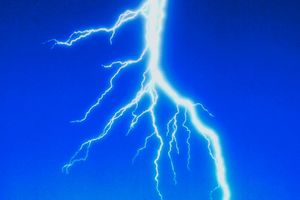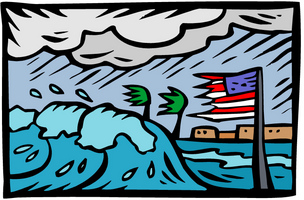| Boom! Crash! What's That Noise?
By Erin Horner |

2 The bright light that Matt saw was lightning. The loud boom that he heard was thunder. Thunder and lightning go hand-in-hand. You can't have thunder without lightning. Lightning is very hot. When a bolt flashes in the sky, it makes the air explode. Thunder is the sound from the exploding air.
3 We always see lightning before we hear thunder. This is because light travels really fast. Sound travels more slowly. When you see a bolt of lightning, start counting. When you hear a clap of thunder, stop. This will show you how far away the lightning is. If you hear thunder five seconds after you see lightning, then the lightning is one mile away. If you hear the thunder ten seconds after the big flash, then the lightning is two miles away. Sometimes if lightning is very far away, we can see it. But we may not always hear thunder.
4 Thunder is very loud, but it is not dangerous. It might rattle your windows. It might even rattle your nerves! But it will not hurt you. Lightning can hurt you, though. The next time you see a flash of lightning, get ready! A big boom from the exploding air will soon follow.
Task1 2nd M.P. - Assignment 3
Click on this FORM and answer questions about the story!
Task 2 2nd M.P. - Assignment 4
Click on this FORM to enter your poem




